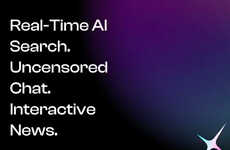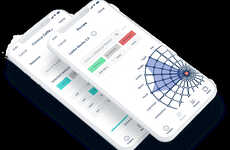
Ask the Computer
Wilken Bruns — November 8, 2007 — Unique
References: computer.org
Analysist: Mr. President, we need to do something about Tibet! In three years it plans to take over the world!
President: How do you know, Mr. Analyst?
Analyst: My computer told me.
President: Oh no, this IS serious!
What sounds like the dialog of low-budget American action movie could soon be reality. The newly developed CARA-Software is designed to predict the political behaviour of different social groups on the basis of an analysis of online messages, blogs, e-mails and similar sources. How it works? I don't know, but it's pretty darn complicated. The system has to learn a set of rules with which it forms semantic RDF-data from the input-texts. The RDF-data then provides the hierarchy and context between different words and allows a software to independently create connections between them. This allows another software to then calculate the most probable action of the analysed subject. Get it? Well, never mind how it works, but think of what it could be used for. The project is of course funded by the U.S. military and will thus be used to analyse potentially unstable regions like Iraq and Afghanistan. Theoretically it could also be used to predict voting behaviour and the like. Let's just hope Georgi doesn't get his hands on one of those.
Food for thought: Hmmm, what could they possibly derive from analysing trendhunter.com? Experimentalists plan to brainwash the world with useless gadgets and fashion items? Damn it, our plan is ruined, RUINED I SAY! NOOOOOOOOO!
President: How do you know, Mr. Analyst?
Analyst: My computer told me.
President: Oh no, this IS serious!
What sounds like the dialog of low-budget American action movie could soon be reality. The newly developed CARA-Software is designed to predict the political behaviour of different social groups on the basis of an analysis of online messages, blogs, e-mails and similar sources. How it works? I don't know, but it's pretty darn complicated. The system has to learn a set of rules with which it forms semantic RDF-data from the input-texts. The RDF-data then provides the hierarchy and context between different words and allows a software to independently create connections between them. This allows another software to then calculate the most probable action of the analysed subject. Get it? Well, never mind how it works, but think of what it could be used for. The project is of course funded by the U.S. military and will thus be used to analyse potentially unstable regions like Iraq and Afghanistan. Theoretically it could also be used to predict voting behaviour and the like. Let's just hope Georgi doesn't get his hands on one of those.
Food for thought: Hmmm, what could they possibly derive from analysing trendhunter.com? Experimentalists plan to brainwash the world with useless gadgets and fashion items? Damn it, our plan is ruined, RUINED I SAY! NOOOOOOOOO!
Trend Themes
1. Predictive Analysis - Disruptive innovation opportunity: Developing advanced software that can predict the behavior of social groups by analyzing online messages, blogs, and emails.
2. Semantic Rdf-data - Disruptive innovation opportunity: Creating a system that forms semantic RDF-data from input-texts to establish hierarchy and context between words, enabling independent creation of connections.
3. Behavioral Prediction - Disruptive innovation opportunity: Utilizing software to calculate the most probable actions of analyzed subjects, enabling prediction of voting behavior and potential geopolitical events.
Industry Implications
1. Military Intelligence - Disruptive innovation opportunity: Applying predictive analysis software to analyze potentially unstable regions like Iraq and Afghanistan, aiding in military decision-making and conflict prevention.
2. Political Consulting - Disruptive innovation opportunity: Leveraging semantic RDF-data and behavioral prediction software to forecast voting behavior and provide strategic insights for political campaigns and consultations.
3. Market Research - Disruptive innovation opportunity: Utilizing predictive analysis and behavioral prediction software to forecast consumer trends and preferences based on online messages, blogs, and emails.
1.6
Score
Popularity
Activity
Freshness























